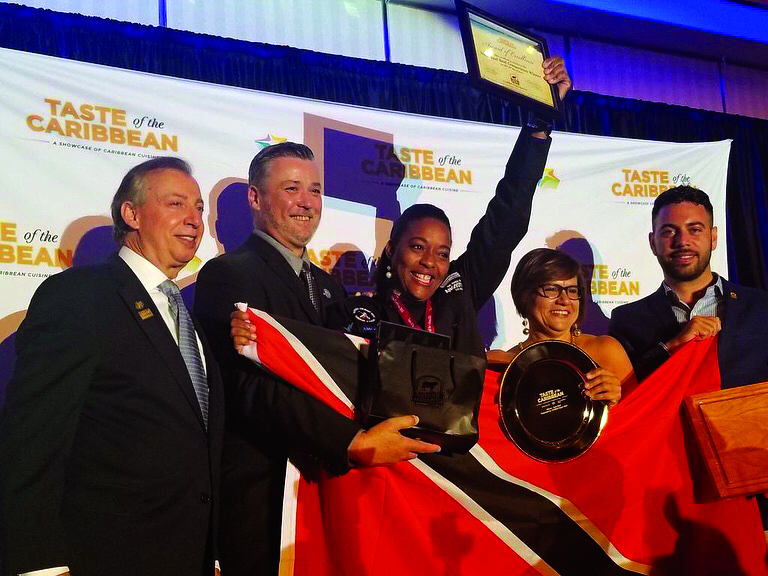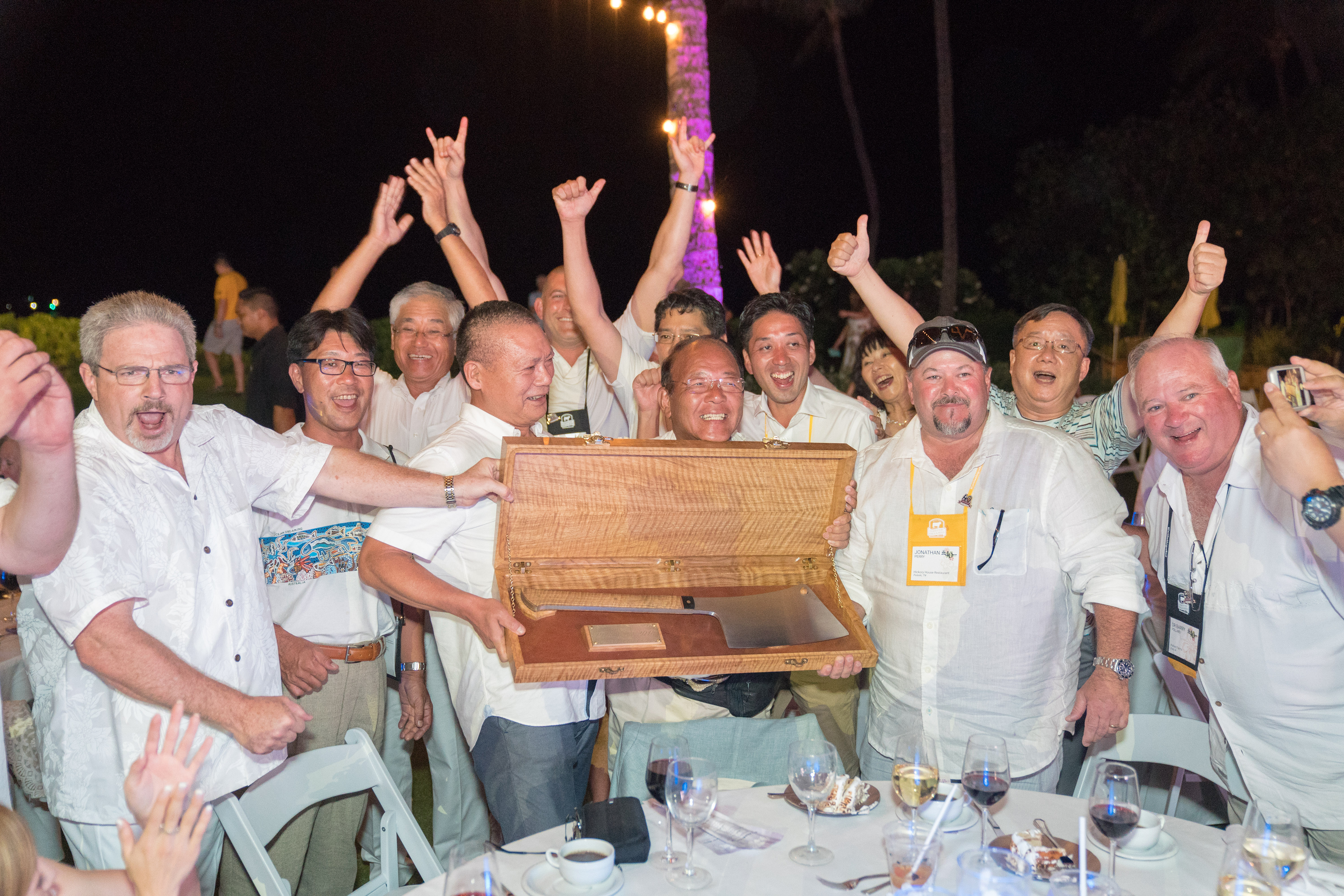Ikinari Steak, known for its “stand and eat” culture, is a sensation in Japan, opening 300 locations in just five years. Its concept: cut steaks to the exact size the customer desires, and charge a fair price by weight. Its foundation: top-quality, highly marbled American beef – specifically, the Certified Angus Beef ® brand.
“A lot of people told me that what we wanted to do was crazy,” says Kunio Ichinose, president of Pepper Food Service, which owns the chain. “But even though no one had ever done it before, customers really took to the idea, and we had lines out the door thanks to word of mouth – even before the unique concept was covered by the media.”
Customers can choose either Certified Angus Beef ® brand strip, which they market as “sirloin,” or chuck eye steak, known at Ikinari Steak as a “wild steak.” For the companies bringing the brand to the table in Japan, the decision to feature it was simple.
“I realized that there was a distinction between commodity U.S. beef and the Certified Angus Beef ® brand, and we wanted to introduce our customers to the higher quality it represents,” explains Masaya Shiraishi, assistant general manager of Marubeni Corp., the importer.
Beyond the consistently high quality of the product, however, the Ikinari Steak decision-makers took several other factors into account as they committed to the brand.
“After we saw the investment the brand made in the Japanese market by reopening its Tokyo office in 2015, we visited its headquarters and Culinary Center, where we learned a lot more about the brand, its science-based specifications, and the community behind it,” says Takahiro Makimoto, corporate officer of distributor S Foods Inc.
Ikinari Steak’s formula is a successful one, both across Japan and in its New York City locations (with more slated in the United States). Ichinose notes that many customers visit the chain multiple times per week.
Fueled by this and other successes in the market, the brand recently unveiled its new Japanese website, created in conjunction with the global advertising and marketing agency Dentsu. Rather than a simple translation of the brand’s flagship U.S. site, it was built from the ground up with messaging, images and resources created explicitly to address the specific needs of Japanese foodservice distributors, restaurateurs and consumers.
The brand’s commitment to quality – demonstrated since its start 40 years ago in its product, people and integrity – has elevated it to the top of a competitive and ever-changing global marketplace. It’s a recipe for success that translates in any language and among diverse communities of consumers, both abroad and domestically.
ENGAGING SOUTH KOREAN PARTNERS
Success in Asia was also characterized by explosive sales growth – nearly 70 percent this year – in South Korea, where U.S. beef is prized, and interest in the Certified Angus Beef ® brand is growing rapidly after key decision-makers in the market have learned more about its standards and heritage.
Nineteen Korean guests, including foodservice distributors and their restaurant customers, spent time last July at the brand’s renowned Culinary Center in Wooster, Ohio, as well as Five Rivers Kuner Feedlot and JBS packing plant, both in Colorado, as part of the brand’s inaugural event geared to the market. They learned everything from alternative beef cuts and fabrication to the brand’s specifications and history. Brand chefs Tony Biggs and Peter Rosenberg presented meals focused on Korean-style flavors and cooking techniques, and attendees even had the opportunity to eat breakfast with an Angus rancher.
The experience made an impact, contributing to that phenomenal growth. South Korea ranks third among all international markets for the brand, which also represents 13% of all U.S. beef imports there.
REACHING DIVERSE POPULATIONS AT HOME AND ABROAD
While educating customers and consumers about the brand is important, its story must be presented in relevant ways that resonate. Rather than a one-size-fits-all approach, marketing efforts must be customized to meet their needs – and that requires deep insight and understanding of diverse populations.
Ranging from H Mart, the largest Korean retailer featuring the brand across the United States; T&T Supermarket, an Asian-style retailer under the Loblaw group in Canada; Cermak markets catering to Latino customers in the Chicago area, or any number of independent carnecerías in Hispanic communities across the South and Southwestern states, each customer base has different needs.
A traditional American-style strip steak cut 1 ½ inches thick might be an impressive novelty, not a mainstay, for cultures and cuisines that feature beef in different ways: thin-sliced or shaved, enjoyed in a communal setting like shabu-shabu or teppinyaki, or cooked tableside vs. in a restaurant kitchen. Beyond beef lovers who bring an ever-growing range of cultural preferences and traditions to the table, the rise of foodie culture has prompted an even wider community of diners to explore flavorful, authentic, global cuisines.










